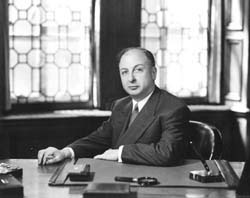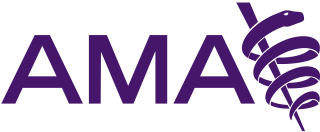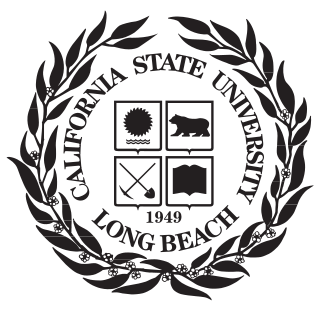
Education is the process of facilitating learning, or the acquisition of knowledge, skills, values, beliefs, and habits. Educational methods include storytelling, discussion, teaching, training, and directed research. Education frequently takes place under the guidance of educators and also learners may also educate themselves. Education can take place in formal or informal settings and any experience that has a formative effect on the way one thinks, feels, or acts may be considered educational. The methodology of teaching is called pedagogy.
The following outline is provided as an overview of and topical guide to education:
Science education is the field concerned with sharing science content and process with individuals not traditionally considered part of the scientific community. The learners may be children, college students, or adults within the general public; the field of science education includes work in science content, science process, some social science, and some teaching pedagogy. The standards for science education provide expectations for the development of understanding for students through the entire course of their K-12 education and beyond. The traditional subjects included in the standards are physical, life, earth, space, and human sciences.

In the United States, a law school is an institution where students obtain a professional education in law after first obtaining an undergraduate degree.
A school counselor works in primary schools and/or secondary schools to provide academic, career, college access/affordability/admission, and social-emotional competencies to all students through a school counseling program. School counselors in most countries have at least a master's degree in school counseling and state and/or national certification.

Medical education is education related to the practice of being a medical practitioner; either the initial training to become a physician, or additional training thereafter.
Inclusion in education refers to a model wherein special needs students spend most or all of their time with non-special needs students. It arises in the context of special education with an individualized education program or 504 plan, and is built on the notion that it is more effective for students with special needs to have said mixed experience for them to be more successful in social interactions leading to further success in life. Inclusion rejects but still provides the use of special schools or classrooms to separate students with disabilities from students without disabilities. Schools with inclusive classrooms do not believe in separate classrooms. They do not have their own separate world so they have to learn how to operate with students while being less focused on by teachers due to a higher student to teacher ratio.
Connected Mathematics is a comprehensive mathematics program intended for U.S. students in grades 6-8. The curriculum design, text materials for students, and supporting resources for teachers were created and have been progressively refined by the Connected Mathematics Project (CMP) at Michigan State University with advice and contributions from many mathematics teachers, curriculum developers, mathematicians, and mathematics education researchers.
Harold Ordway Rugg (1886-1960) was an educational reformer in the early to mid 1900s, associated with the Progressive education movement. Originally trained in civil engineering at Dartmouth College, Rugg went on to study psychology, sociology and education at the University of Illinois where he completed a dissertation titled "The Experimental Determination of Mental Discipline in School Studies."

Allen Allensworth, born into slavery in Kentucky, escaped during the American Civil War and became a Union soldier; later he became a Baptist minister and educator, and was appointed as a chaplain in the United States Army. He was the first African American to reach the rank of lieutenant colonel. He planted numerous churches, and in 1908 founded Allensworth, California, the only town in the state to be founded, financed and governed by African Americans.
Expectancy-value theory has been developed in many different fields including education, health, communications, marketing and economics. Although the model differs in its meaning and implications for each field, the general idea is that there are expectations as well as values or beliefs that affect subsequent behavior.
Education sciences and education theory seek to describe, understand, and prescribe educational policy and practice. Education sciences include many topics, such as pedagogy, andragogy, curriculum, learning, and education policy, organization and leadership. Educational thought is informed by many disciplines, such as history, philosophy, sociology, and psychology.
Dr. Mary S. Sutherland, EdD, MPH, FAAHB was professor of health education at Florida State University, where she held appointments in the Department of Curriculum and Instruction and the Department of Human Services and Studies. She coauthored more than 50 papers in peer-reviewed journals.
Value education the process by which people give moral values to each other. It can be an activity that can take place in any human organisation during which people are assisted by others, who may be older, in a condition experienced to make explicit our ethics in order to assess the effectiveness of these values and associated behaviour for their own and others' long term well-being, and to reflect on and acquire other values and behaviour which they recognise as being more effective for long term well-being of self and others. There is a difference between literacy and education.
James G. Henderson is a full professor at the School of Teaching, Learning and Curriculum Studies at Kent State University. He co-founded an education journal and has written several books and articles on curriculum design. He created the curriculum structure known as 3S Understanding.
Charles Basch is the Richard March Hoe Professor of Health and Education at Teachers College, Columbia University, New York City, New York. He teaches courses related to epidemiology, planning and evaluation. Before coming to Teachers College, he was Assistant Professor of Community Health Education at Russell Sage College in Troy, New York.

Marie Agnes Hinrichs Ph.D., M.D. was an American scientist specializing in zoology, physiology, and physical health. She earned a Ph.D. in zoology in 1923, conferred from the University of Chicago. She taught at the University of Chicago, before moving on to direct departments at Southern Illinois University and University of Illinois Her awards include the University Distinguished Service Award from Southern Illinois University Carbondale, the Distinguished Service Award and the William A. Howe Award from the American School Health Association.
Lynn Fuchs is an educational psychologist known for research on instructional practice and assessment, reading disabilities, and mathematics disabilities. She is the Dunn Family Chair in Psychoeducational Assessment in the Department of Special Education at Vanderbilt University.












